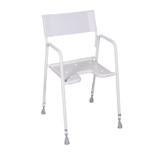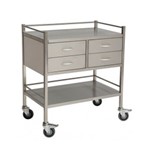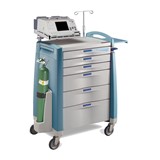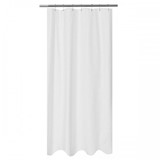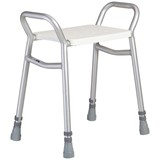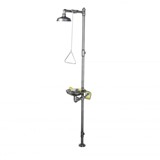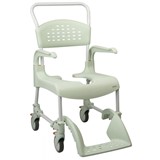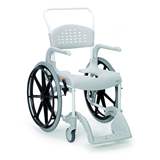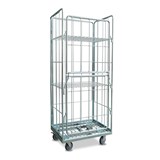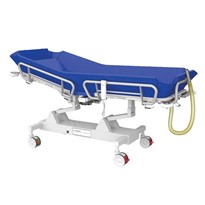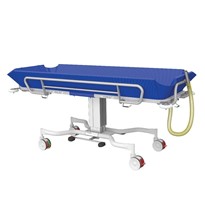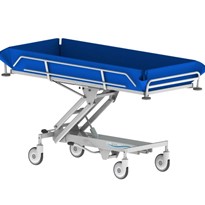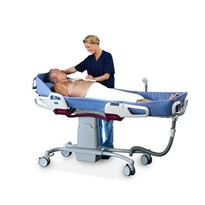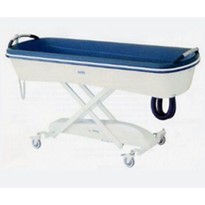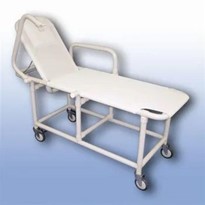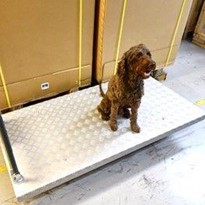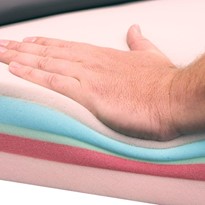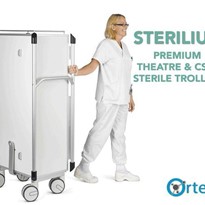Shower bathing trolleys are commonly used when a patient cannot walk or move normally and is unable to sit in a shower chair or be adequately supported in a standard bathroom. It can be a little daunting today trying to work out what trolley may be best to meet your requirements when you have a challenging disabled patient to care for.
Here we discuss some of the factors that need to be considered when choosing the right solution;
Patient Type
Depending if your patient is a youth or elderly, large, small or completely immobile, it will have an influence on the type of trolley you need to use. Shower trolleys are available in a range of sizes such as short junior versions only 1680mm long to standard adult sizes like 1950mm long x 795mm wide, or extra wide Bariatric versions up to 1195mm wide overall.
Budget
Shower trolleys are available from very basic manual mild steel trolleys to advanced electrically operated stainless-steel units with options such as patient backrest support. This can vary the cost from as low as $5000 or more than $10,000 each. It is important to establish clearly what your budget is to help narrow down to the type of trolley that may be best for you.
Weight Capacity
The method of construction of shower trolleys varies from simple single column designs to multi-arm lifters. These differences in design have an effect on the SWL of trolleys starting from an industry standard 180kg to as high as 300kg. It is important to cater correctly for your patient's weight and also allow for extra load such as water if you are intending to fully bathe.
Manoeuvrability
Wheel sizes and types can deliver very different results when it comes to transporting your patient. Smaller single wheel styles may require greater physical effort to push on vinyl and carpeted surfaces, whereas larger twin wheel castors help to spread the load with smoother rolling over more surfaces. Always consider the wheels if you are intending to move your patient around on the trolley.
Materials
Many shower trolleys are constructed from standard mild steels with standard powder coating or paint. While this may provide a lower cost to purchase up front, rust can show quickly and will shorten the expected life of your capital equipment. With higher costs generally comes more assured builds, with multi-layered coating protections or even entirely stainless-steel construction which will outlast any other alternative.
Height Adjustment
It would be normal for a shower trolley to be height adjustable, which facilitates the safe transfer of patients from bed to bed or the best working height for the carer. Standard shower trolleys are generally hydraulic operation, which means it requires some physical effort by the carer to pump and raise or lower the trolley top. Electrically operated trolleys are generally operated by a water safe battery system and touch button handset requiring very little human effort. This allows the carer to be more readily available to assist the patient.
Bath Liner
The section that the patient lies in is very important, requiring a safe and hygienic surface whilst being easy to clean and service. Some low-cost vinyl can stick to an elderly patient’s skin if let to dry causing risk of injury. Other materials are very soft to touch, yet are easy to damage, tend to wear quickly and are very expensive to repair. Consider features such as the surface finish and ease of removal for best cleaning, folds and crevices in the material and the cost of repair or replacement.
Safety
Functions such as brakes and side rail releases can vary in number and positions. It is best to have four wheel brakes available so that maximum locking force can be achieved, or at the least, two brakes can be applied from either side of the trolley during bed-to-bed transfer. Some side rails may only have one catch or release system, however many have two so that they must be operated at the same time together, preventing the patient from being able to easily reach and release the rail and stopping the risk of falling out.
Customisation
Most shower trolleys are produced or supplied in one standard design. Depending on the facility size or type, in some cases it may be a benefit to have choice over the colours and design if possible. This may help in patient or department identification or add coordination to a prestige facility. Some bespoke manufacturers can assist in a range of bath liner colours or trolley frame colours to help in practical outcomes.
So, as you can see there are a lot of points to consider when it comes to shower trolleys. It’s important to remember that whichever product you decide to purchase, they should be able to provide you with localised support, regular maintenance and servicing, spare parts and user guides for all models.




